Psoriasis
Psoriasis is a common skin condition that affects nearly 5% to 7% of the population. The tendency to develop psoriasis seems to run in families. Psoriasis causes considerable scaling of the skin and general skin discomfort, and it may or may not itch. A more important effect is the embarrassment caused by the unsightly lesions themselves. The condition can persist for years or even an entire lifetime. With proper treatment you can achieve 90-100% control of the cutaneous and arthritic issues associated with psoriasis as well as the possibility of sustained remissions.
Sometimes, psoriasis tends to fade away by itself. Typically the cause is intermittent with episodes of stable lesions and occasional flares. Skin flares can be associated with increased stress. In most cases, though, a great deal of perseverance, time, and patience is needed to control the condition. Eruptions can come on unpredictably and then subside quickly or over a period of months. There are many measures available to help you cope with the disease and make you more comfortable.
What are the Causes of Psoriasis?
Psoriasis seems to be caused by an overproduction of skin cells. Usually, it takes skin cells about four weeks to develop, move to the skin surface, and flake off. In people who have psoriasis; however, this cycle occurs about ten times faster than normal, causing scaling and the formation of thick patches of dry skin called plaques. Because of this increased cell activity, a greater network of tiny blood vessels develop in the affected area to nourish the dividing cells; this increased blood supply is responsible for the pinpoint spots of bleeding that are seen when psoriasis scales are removed by scratching.
Other factors besides heredity affect people with psoriasis. The condition is considerably worse during cold weather than it is in warm weather, probably because of the drying effect of heating systems. Conversely, the warm weather of the summer causes noticeable improvement in the condition, since ultraviolet B light provided by sunshine suppresses the rapid cell turnover of psoriasis. Hormones also seem to play a role in psoriasis outbreaks. Interestingly, psoriasis tends to subside during pregnancy, only to worsen after delivery. Emotional factors also play a part in the worsening of the condition. Great amounts of stress or emotional upset can bring on very severe bouts of psoriasis, just as it can cause flare-ups of eczema, acne, ulcers, blood pressure, and other conditions.
What are the Characteristics of Psoriasis?
The sites of lesions where psoriasis breaks out are usually easy to identify. The skin is slightly elevated, flat-topped, pink or light red, and covered with silvery scales. The lesions are also clearly bordered. One other sign of psoriasis is pinpoint bleeding of the lesion when the scales are rubbed or scratched off.
Psoriasis can take different forms in different people. For the most part, the lesions usually develop on the elbows and knees, especially when some skin trauma has occurred near these joints, as well as on the scalp, fingernails, and around the anus and genitals. Psoriasis tends to form symmetrically; that is, if one elbow is affected, the other probably will be, too. The lesions tend to form on areas of the body that have been injured in some way. Affected areas often are seen around scars, cuts, abrasions, or at injection sites, but following a sunburn, the whole body may break out in red, scaly patches. Children usually are affected by this type of psoriasis and often begin to show signs of the disease following an illness such as strep throat.
Plaque-type psoriasis is characterized by formation of large, thick, red, round patches with large, silvery scales. This type of psoriasis most commonly appears on the elbow, knees, lower legs, and lower back and is difficult to eradicate because it has probably been present for a long time. The palms and soles of the feet may be covered by plaques,which may crack and bleed. An inverse type of psoriasis affects exactly the opposite sites than those affected by plaque-type psoriasis. In this type of psoriasis, patches of skin in the bends of the elbows and knees, under the arms, in the groin area, and under the breast develop moist, redder, and less scaly lesions.
Psoriasis of the scalp can take several forms. In some people affected by psoriasis, the condition appears to cause a very severe dandruff problem. In others, large, red patches with thick scales may appear on the scalp, sometimes only in one area and sometimes covering the entire scalp.
Occasionally, hundreds of small psoriasis lesions will appear on someone who has had psoriasis or another type. Although these sudden and numerous eruptions can cause alarm, they do have one advantage over slower-forming types of the condition – they tend to be easier to control than other types of psoriasis that form more slowly, but they are very difficult to clear.
Generalized exfoliative psoriasis is a severe form of psoriasis that usually occurs in someone who has had psoriasis of another type. The skin becomes very red, and scales appear all over, from head to toe. Sometimes there is no explanation for the onset of generalized exfoliative psoriasis, although a severe sunburn or a rash caused by a drug allergy may bring on such eruptions. This condition may fade away gradually, or it may persist for a long time.
With the appearance of any psoriasis on the skin, the fingernails will probably also show involvement. The nails may just become pitted or stippled, or they may become thin and brittle and separate from the nail bed. Sometimes, the nails can become very thick, yellowed, and crumbly.
There is another type of psoriasis known as pustular psoriasis that does not involve redness and scaling of the skin. Instead, small bumps appear on the skin, especially in the palms and soles. Also, a type of arthritis, psoriatic arthritis, often occurs in patients who have psoriasis. This condition is similar to rheumatoid arthritis, except that it often affects the joints of fingers with nails affected by psoriasis, and less joints are affected than in rheumatoid arthritis.
How is Psoriasis Treated?
The goal of treatment is to reduce the signs and symptoms of the disease, and to do whatever possible to avoid a recurrence.
Sudden, acute appearances of many red, scaly lesions call for application of soothing, moisturizing creams or lotions. Heavy moisturizers, such as petroleum jelly, may be used at night, and lighter formulations may be used during the day. These products help to lock water into the skin, so they work best when applied right after bathing or showering. Bath oils may also be recommended to help soften the skin. Only a mild, pure soap or a soap substitute should be used.
For mild cases of psoriasis, your doctor may prescribe a corticosteroid cream or ointment for you to apply to affected areas. These preparations should be used after the area has been soaked so that the scaly portions become soft and let the medicine through. Corticosteroids lessen the redness and inflammation caused by psoriasis.
Biologics such as Enbrel, Humira, Stelara, Remicade, Taltz, Cosentyx, and Otezla may also be used to treat psoriasis.
With all psoriasis treatments, patients can expect close to 100% clearing as well as control of arthritis and other inflammatory cardiovascular issues associated with the condition.
Thick, stubborn plaques may warrant the used of occlusive dressings, in which a corticosteroid preparation is first applied to the skin and then covered with plastic film to soften the scales and help the medicine penetrate into the skin. The same type of plastic wrap used to cover foods works well on large body areas, and plastic gloves may be used to cover the hands. If thick, dry, rough scales remain despite treatment, your doctor may recommend or prescribe more specific therapy.
For psoriasis involving the scalp, many over-the-counter products are available to treat the scaliness. Most of these products contain coal tar or tar derivatives and are often very effective in controlling scale formation and flaking. A tar shampoo is applied exactly the same way as regular shampoo, except that the lather should be left on for 5-10 minutes before rinsing. People with gray, blonde, or bleached hair should use a mild tar shampoo, since temporary discoloration may occur; also, fabrics are easily stained with tar products.
Your doctor may also recommend use of a tar preparation on thick, scaly psoriasis lesions. These preparations are available in the form of creams, gels, lotions, and ointments, and almost all of them can be purchased without a prescription. The medicine is usually applied to the affected area after showering or bathing, so that some of the scales are removed before application. Skin affected by psoriasis usually absorbs substances much better than normal skin, so tar preparations are usually quite effective. However, these medications may cause irritation on thin-skinned areas of the body, such as the underarms, groin, and face, or a worse reaction in those who are allergic to the tar. If any of these reactions occur, let your doctor know.
Alternatively, your doctor may prescribe a cream or ointment containing anthralin. Like coal tar preparations, anthralin slows the rate of production of skin cells in psoriatic lesions. It can also stain fabrics and temporarily discolor gray or white hair. To avoid staining, wear a plastic cap or gloves after applying any of these preparations to the scalp or hands at bedtime.
Sometimes, a tar or anthralin preparation is used along with a sunlamp. The ultraviolet ray of the sun often has a beneficial effect on psoriasis. Sunlamps mimic the rays of the sun, but, as with any type of exposure to ultraviolet rays, you have to be careful. Coal tar preparations make the skin more receptive to the sun’s effect, so they are applied to the affected areas and then washed off completely before the sunlamp is used. Do not try to do this procedure at home. Only your doctor can tell exactly how much exposure to the sunlamp would be safe for your skin. Because coal-tar treated skin is more sensitive to the sun, a severe sunburn could easily develop.
Some very effective oral medicines are available to treat extremely severe psoriasis. Etretinate, a derivative of Vitamin A, has recently been introduced to treat psoriasis when all other therapies fail; another drug methotrexate, is a cancer drug that has been proven effective in treating very severe psoriasis. However, it must be stressed that these two drugs are used only when nothing else seems to work.
Although it may seem impossible, scratching of the affected areas should be avoided as much as possible. Remember, psoriasis often strikes at areas of skin injury. Scratching only worsens the condition and invites infection. To prevent damage from scratching, fingernails should be closely clipped. Children’s hands may be covered with cotton gloves at night to discourage scratching.
Contact Us today to receive psoriasis treatment at our Long Beach, CA area.
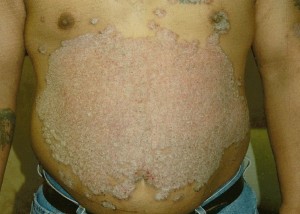
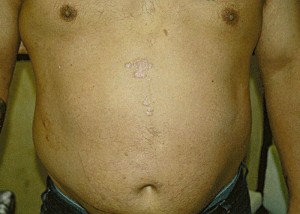
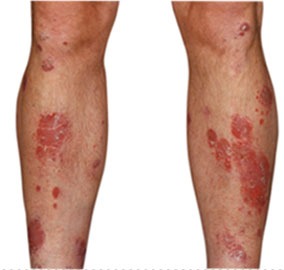

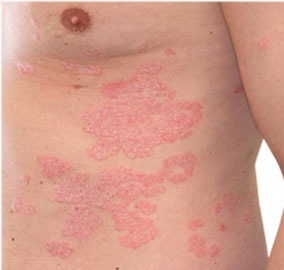
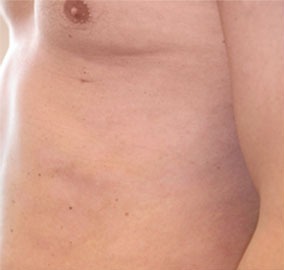
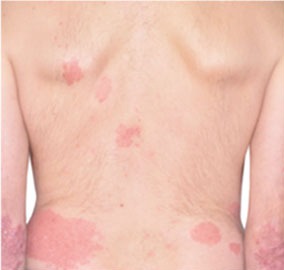
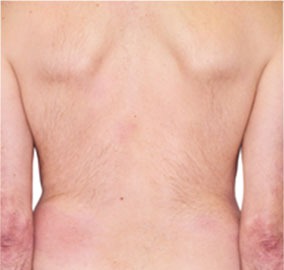
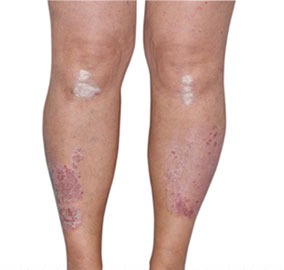
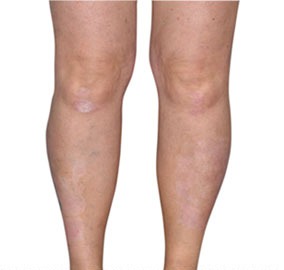
*There is no guarantee of specific results. Individual results may vary*

